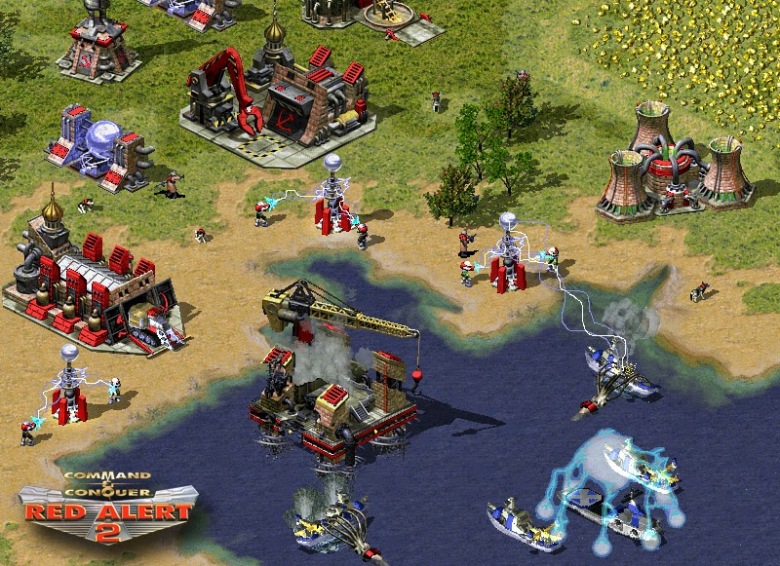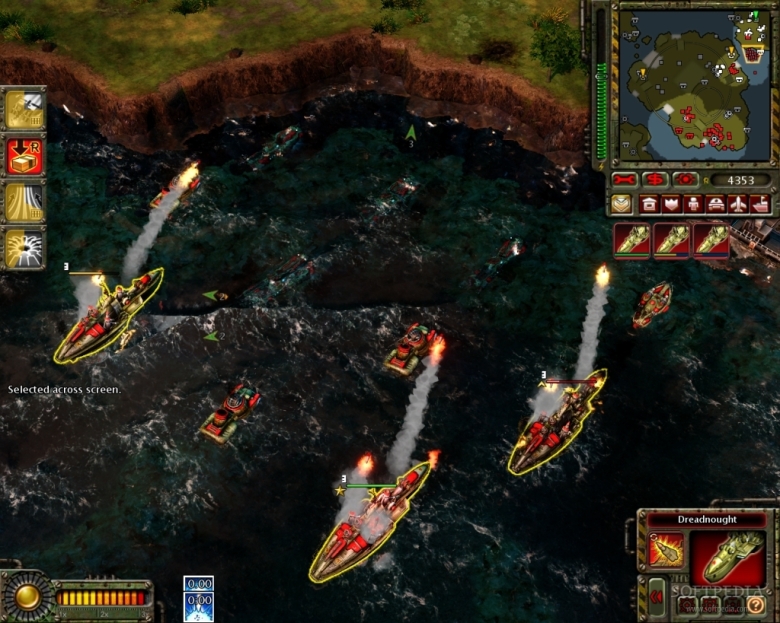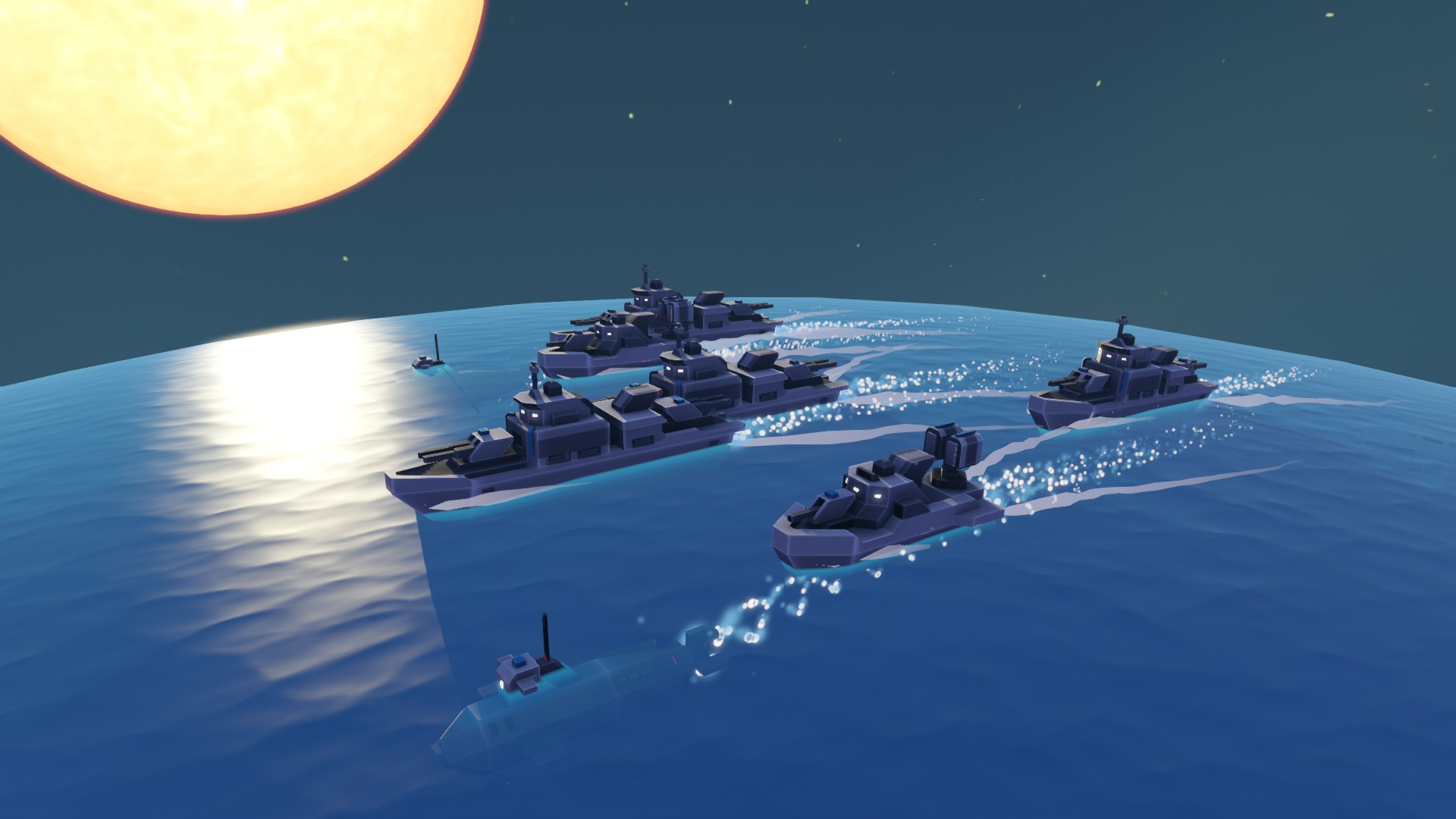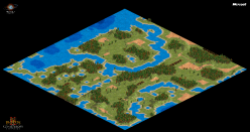This is my 7th article funded by my kind patrons at Patreon. Thanks so much to my contributors for their continued support.
I really love those sites where people can anonymously ask questions of members, like ask.fm and curiouscat. It’s a really interesting way to generate conversation topics, and kind of kick-start the creative process at times. Questions generated via these sites can also force me to focus and respond to specific aspects of strategy game design, instead of resting on my laurels and remaining in my comfort zone. I do try to write to force myself to specify and challenge my perception of strategy game design, after all, and any method that drives more conversation on RTS is purely a bonus for me.
The latest question I received via curiouscat is a perfect example: an anonymous questioner asked me about naval combat in RTS, and why it was largely abandoned after the 90s or early 00s. Specifically, the question I was asked was as follows:
What happened to naval combat in RTS?
I’ve been playing the early classics again recently (Warcraft 2, AoE, AoM, Red Alert 2). I was surprised how many campaign missions focus on water battles.
Granted they aren’t very fun, and manually loading/unloading ground units via a dozen transport ships gets old fast, but… surely this could be improved?
Only the Anno series of games still has some. Where can I find more naval combat? Why did that part of RTS not survive?
I will point out that the question as asked is not strictly accurate. Wargame: Red Dragon, released in 2014, has naval units. Planetary Annihilation, which was also released in 2014, also has a strong naval component. Naval combat has never been a particularly prevalent feature in the broader RTS genre, and though it may be accurate to state that it’s showing up less often in strategy games I don’t think it’s fair to say that it’s become virtually nonexistant. I’d contest that naval combat is less visible in part due to market crowding: there are just many more games out there than there have ever been before, and it’s easier than ever to miss games with features that might appeal to you.
But, this is a good opportunity to look at the ups and downs of maritime combat in RTS games, why it’s seldom done, and why it’s even more seldom done well. It’s not a topic I think of often, so I’m quite grateful to whomever asked the question. Hopefully, I’m able to do the topic justice. Let’s get to it.
Planes, Terrain, and Automobiles

Before we talk about naval units, let’s talk about air units. In classic real-time strategy games as in many modern RTS games, the entire game space is essentially 2-dimensional. in StarCraft 2, for instance, air units aren’t really different in any meaningful way from ground units: there are rules in the game about what units can collide with, and about what types of weapon can target which type of unit, but it’s all basically metadata. The only functional difference between a ground unit and an air unit is metadata: ground units and air units basically just respond to objects in the game according to rules determined by metadata tags on structures, weapons, and the units themselves.
There are some games that have exceptions to this rule: I believe Supreme Commander actually models firing arcs for each weapon, meaning that ‘ground’ weapons simply can’t lift high enough to target air units. This is, technically, also established at least in part via metadata, but the modeling in Supreme Commander attempts to use 3d-style positioning to determine what can and cannot be hit based on an actual height differential between the shooter and target, something that games like StarCraft completely eschew. (this is not commenting on which model is better: that’s a topic for another time)
Really out on a limb here, but please bear with me: this is going somewhere.
So, er, back on topic. In essence, air units in classic Command and Conquer and StarCraft, et cetera are simply units that obey a slightly different subset of movement rules than ground units: they just ignore some terrain object collision while moving, and are targetable by a different subset of weapon profiles. This is true across a broad swath of modern and classic RTS, and is not meant to be a criticism of air units in general, or RTS systems. I just feel that its relevant. Also, to be fair, it’s a really straightforward and sensible way to approach something like terrain avoidance and weapon profiles: just change some metadata, and you have different types of thing in your game.

A very similar set of rules and restrictions applies to maritime units. The main difference between naval units and ground units in RTS is the type of terrain they’re able to move on: naval units sit adjacent to ground units, where air units just ignore some of the restrictions of ground units. At its best, this is a neat idea: separate physical spaces that require unique unit types. Unfortunately, this has some massive edge cases that often lead to suboptimal experiences.
Let’s take a better look at how the presence of naval units impacts the map design of RTS games.
A Patchworld Quilt – Logistical Challenges of Naval Units
So, what are the implications of having units that require unique terrain, adjacent to the terrain used by other units? Because that’s the main difference, in most strategy games, between naval units and air units. Air units occupy the same play space as mainline ground units, only with fewer restrictions on their movement, while ground units and naval units occupy separate and largely mutually exclusive terrain types.
Obviously, this has a multitude of implications, not the least of which revolve around the physical spaces in an RTS map. If the game’s core systems include units that require fundamentally different types of terrain to function, game maps have to address how these fundamentally different types of terrain interact with one another.
In RTS that support naval units, how and where water is included on a game’s map is a terribly non-trivial issue. Water spaces inherently limit the terrain traversal options of ground units, and ground spaces impact the utility of naval units. Maps with extensive areas of land can render water units only literally useful at the margins of play: any engagements that take place beyond the rage of offshore guns render water units largely useless sunk costs, which can make the already often complex calculus of army composition only more difficult and frustrating for players. And conversely, mostly-water maps can grossly limit the impact of ground units, rendering ground-based assaults (typically required to seal the deal and actually win the game) frustratingly difficult to pull off.
Pirates of Shallow Water

I’d like to note one thing that the Age of Empires games do (Wargame titles have a more advanced version of this line of thinking, as I believe does WarCraft 3 where maritime units are available in campaign) that’s a step in the right direction is the concept of ‘shallow water’ terrain. This is a hybrid terrain type that allows traversal for both land and water units, and allows more leeway in terms of where and how such units can interact, and makes map traversal largely simpler to handle for both kinds of unit.
As I said, the Wargame titles take this a step further in their last installment, Red Dragon, (in a good way) and restrict the larger and more powerful naval units to deep waters, where smaller and lighter units can traverse the shallows to engage with ground units.
At its best, naval combat adds interesting dynamics to strategy games: managing the interplay between aspects of your army that are physically unable to enter each others’ play space has tremendous potential. When naval combat pays off in strategy games, it pays off in spades in the form of increased depth derived from the complex interplay of the game’s various unit types, to which this geographic dispersal adds additional layers.
But the edge cases, where naval units break down and add frustration to the gameplay experience, are enormous. Let’s look at a couple of specific instances.

Broadside of a Barn – some of the complications of naval units
In many RTS with naval units, there’s the problem that in a large number of cases, a decent percentage of your total available tools (units) might not be useful on any given map. In a game like StarCraft or Command and Conquer, the primary defining factor guiding which units are used is your strategy: Terran players might forego Battlecruisers when pursuing a mech-dominant strategy, to pour more money into Siege Tanks, Cyclones, Widow Mines, et cetera. A Protoss player might skip the Robotics Facility if they’re trying to rush out Void Rays or Oracles. A Zerg player might not build an Ultralisk den if they’re not planning on mixing that unit into their army composition. Whether or not you choose to produce them and in what quantities, ground and air units tend to be able to be used across a wide variety of map designs. Naval units, in particular, have an additional level of risk in terms of gameplay design.
Depending on the percentage of one’s unit roster focused on maritime forces, players on maps with no viable water presence could be out by approximately 1/5 to 1/3 of their unit roster: we saw this clearly in Total Annihilation: Kingdoms, with the Veruna faction’s heavily maritime-based army drastically stripped down on maps without decent waterways.

Another potential pitfall where naval units are concernes is the increased prevalence of false build order paths. Looking at StarCraft 2 as a baseline example, it can be highly non-trivial (especially in the early game) to ascertain what strategy one’s enemy(ies) is employing, and building up an army to address that nascent strategy. Early air units require a much different response from your opponent fast-expanding, which requires a different response to a Photon Cannon rush.
Naval units add another thing to worry about, another type of operation to divide up your resources with, and often more ways to misspend resources so that part of your army is unprepared or underpowered to meet your opponent’s threat head-on. The choice to add naval units is typically presented in the early to early-mid game in RTS, where economies are ramping up and expenditures tend to have exponential impacts on a player’s ability to wage war as the match progresses: over- or under-spending on naval units in the early game can put players drastically behind in a longer naval combat game, or leave them under-prepared for early to early-midgame conflicts on land.
It can already be somewhat of a challenge in RTS without maritime units for players to end up meeting on equal footing, to foster situations where the game feels fair to both players, and adding another type of terrain, type of troop to worry about, can create edge cases where a player’s investment in that other terrain type ends up hurting them elsewhere in the game.
I’m not saying that “players are too stupid to use naval units” and I hope that’s not what it sounds like. I’m trying to illustrate the increase in complexity that having another terrain and unit category can introduce into map design, faction design, and build order. These situations are addressable, and maritime units can and have worked well in RTS titles. But a design is only as good as the edge cases it enables, and losing a match because you overcommited to ships early hurts and feels awful.
Which I think is why maritime combat has tended to work better in larger games with larger numbers of units and bigger maps: more money, longer map traversal times, expanded unit rosters mean that each issue addressed above has less of an impact: already claustrophobic WarCraft maps have trouble adding water and limiting traversal, but miles-across Supreme Commander maps don’t lose anything much if the outside third is aquatic.

Supreme Commander and similar large-scale RTS also have many other systems choices that allow the inclusion of naval units to be more graceful.
First and foremost, firing ranges for units in Total Annihilation-style games is often great enough to allow “offshore bombardment” to be a real thing, which is not often the case in RTS. Super-long-range missiles and artillery weapons on board ships allows them to attack targets well inland, rendering them an investment that is more widely useful than (mostly) sea-locked navies in WarCraft 2 or Age of Empires games. Additionally, there’s a decent cross-section of amphibious units, from the UEF’s Tier 2 hover tank to the Cybran Nations’ Tier 2 destroyer that can sprout a pair of legs, to Engineers and the Commander and sub-Commanders being able to traverse oceans, there’s a much greater feeling of freedom to map traversal than a strict land/water divide makes possible.
Actually, all of the best naval RTS (in my humble opinion) have made much use of amphibious units: it really lessens the pain of the land/water divide. Red Alert 3 has perhaps the best treatment of aquatic units in the genre as a direct result of its absolute commitment to making water a viable and interesting terrain type.
Aquatic buildings also go a long way to making water feel viable. Being able to put Power Plants, Air Factories, and other support structures in the water really opens up the map for creative and nuanced play, which makes it feel like water opens up tactical and strategic possibilities instead of closing them off.
Which I feel kind of cuts to the point of what I’ve been trying to illustrate for almost 2500 words: the inclusion of naval units feels like its is intended to open up possibilities and introduce another interesting layer of decision-making and interaction to RTS games. But, due to limitations in implementation in most games, it tends to feel like it restricts map design, faction design and unit choice, and obfuscates build orders. Cross-pollination of land and water (or air and water) can go a long way toward making these choices more interesting, less punishing, and make the game feel like a better and more complete gestalt.
Conclusion

This was all prompted by a question: what happened to maritime combat in RTS games? Why was it largely dropped after experimentation with it in WarCraft 2, Age of Empires, Red Alert, and more? The easy answer is that it’s complicated, and hard to do right, and easy to create edge cases that frustrate or infuriate players.
Designing engaging game systems around water is non-trivial. The early game must be considered: how and when does the player know it’s safe to move out onto the water? Are their early tools available (as in Supreme Commander) that can be useful both on land and at sea? The demarkation of the two terrain types is important: too much or too little water on a map changes the value proposition of naval units, as does the risk and reward scenarios around maritime structures, the range of naval and land based units and defenses, the number of amphibious units (important to carry value between the water and land arenas). “Shallow Water” where some or most ground units and some or most naval units can both traverse, has been a staple of the better-implemented naval systems, but is probably inferior to the Supreme Commander/Total Annihilation model.
More than the frustration of loading and unloading transports, the true danger of naval systems lie in false build order paths, wasted resources, increased complexity in the early game, and a feeling of disconnection rising from the binary separation of discrete systems.
I think there’s a place for different terrain types and movement profiles in strategy games, but while walking through the topic for this article, it really hit home why you don’t see ships in more of them. Here’s looking forward to tons more RTS in the future, and the eventual games that move maritime combat forward.
Thanks for reading!









Nice article, something also worth mentioning would be that some RTS don’t provide any meaningful advantage to the player who has Naval superiority. This makes the game into judging how little you can get away with spending on ships and stay safe.
I liked how in RA3 there were significant resource nodes in the ocean to reward a player for naval superiority. This mitigates the zero sum you propose that spending in one theatre results in a disadvantage in another, as long term if you can secure the resources of one you will have an advantage in both.
LikeLike
Would naval importance be improved if one player had to have a base in water while the other one has to be on land? (inherent asymmetry) or maybe a game where all the bases have to be on an intersection between land and water? It could be docks maybe, or giant trees that grow on land but rely on water that their roots grow into, killing roots cuts off the water supply (equivalent to power or energy in some other games)
LikeLike